Yesterday Mike Splane hosted another chess party that was devoted specifically to endgames. Uyanga Byambaa brought a fascinating game that she played in the recent U.S. Women’s Open in Las Vegas. She was Black against an unrated (!) player named Elena Rodriguez, a ringer who ended up tied for first at 4-1 and got a provisional rating of 2224. Uyanga was upset that she only managed to draw this game, because if she had won she would have been in the tie for first instead.
Here is where all the excitement begins.
FEN: 5rk1/4pp2/3p2p1/p1rPn3/1pP5/1P6/P3B1PP/4RR1K b – – 0 1
Rodriguez has just offered a draw, which Uyanga sensibly declined, because all of her pieces are better than all of White’s pieces. Not only that, Uyanga thought she had a simple route to victory: trade off all the rooks and get into a minor piece endgame, with the better knight versus the bad bishop.
Here Uyanga played 1. … Ra8, a decision that we criticized at first. “Black must play 1. … a4 here,” said Craig Mar. Black’s idea is to either exchange on b3 and create a weakness there, or else exchange on a4 and gang up on all of White’s weak pawns with her rooks.
Uyanga’s omission appeared especially significant after her opponent played 2. a4!, which prevents the pawn break Uyanga could have played the move before. Paulo Santana commented that his coach talks to him about “unique opportunities,” moves that you only get once chance to play.
I thought that this was an excellent concept to talk about, because it is the opposite side of the coin from Mike Splane Chess. As you know, Mike’s philosophy is to be patient, don’t rush into things, first eliminate counterplay and then squeeze your opponent to death. But unique opportunities are moves when, by definition, you can’t be patient.
Was 1. … a4 in fact a unique opportunity? As we looked a little bit deeper, it was not so clear. Uyanga said she didn’t play it because of the variation 2. ba Ra8 3. Bd1!
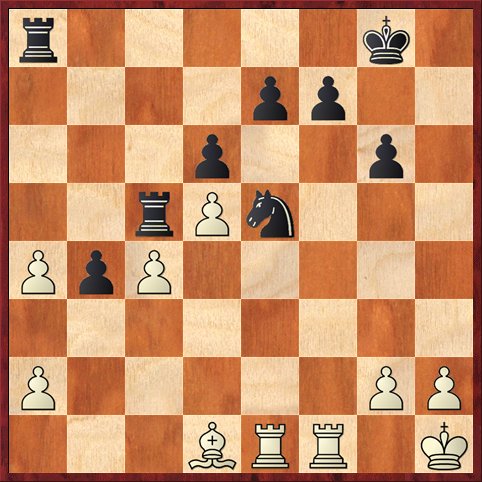 Position after 3. Bd1. Black to move.
Position after 3. Bd1. Black to move.
FEN: r5k1/4pp2/3p2p1/2rPn3/PpP5/8/P5PP/3BRR1K b – – 0 3
Here the only move we looked at during the party was 3. … Rxc4? Believe it or not, after 4. Bb3 White is actually just about equal. Several people didn’t believe it at first, pointing to how bad White’s bishop is. But Mihai Suba has a saying, “Bad bishops protect good pawns,” and that is the case here. Also, by playing the pawn break 1. … a4, Black has created a new weakness in her own camp — the pawn at b4. After, say, 4. … Rc5 5. Re4 Rb8 6. g4! (an important move, creating luft and preventing … f5) g5 7. Rd1 the rook comes to d4 and Black’s b-pawn is lost.
This seemed to be a great vindication for Mike Splane Chess: Don’t play a risky move like 1. … a4 and create unnecessary weaknesses!
However, a closer look reveals it’s not so. The problem was Black’s decision to take on c4 with the rook. A better idea is 3. … Ra7! (3. … Kf8 is also good) defending the e-pawn so that the knight can take on c4. Even though White can now trade off her bad bishop with 4. Bb3 Nxc4 5. Bxc4 Rxc4, in my opinion Black is way, way better here. The b4-pawn is now adequately defended and White’s multiple weak pawns cannot be held. There are lots of lines we could look at, but I’ll have to leave them up to you because there is a lot more to cover in this endgame.
Score so far: Opportunity Chess 1, Mike Splane Chess 0.
But, anyway, after 1. … Ra8 2. a4! the game is certainly not over. Black can’t open lines on the queenside any more, but she has created a weakness on b3 and all she needs to do is create another weakness on the kingside, and the Soviet School of Chess says that she should win.
So Uyanga proceeded to shift her forces to the kingside: 2. … Kg7 3. g3 Rh8 4. Kg2 Rc8 5. h4!
Uyanga told us that she was glad to see this move because she thought it was the second weakness that she needed to win the game. She continued with her plan: 5. … Rh6 6. Rh1 R8h8 7. Bd1! g5?!
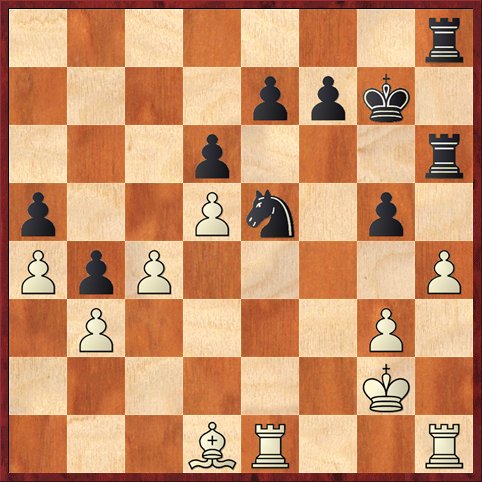 Position after 7. … g5. White to move.
Position after 7. … g5. White to move.
FEN: 7r/4ppk1/3p3r/p2Pn1p1/PpP4P/1P4P1/6K1/3BR2R w – – 0 7
Do you see the resource that Uyanga missed? It wasn’t just Uyanga. Her opponent missed it too, and so did everyone at our chess party!
The answer is 8. c5! Oops, we forgot about the queenside! Of course Black cannot take because the knight hangs. If 8. … Nd3 then 9. Rxe7 gives White the counterplay she desperately wanted. You can try 9. … dc or you can try 9. … Nxc5, but I think that White is just better. She has a target on f7, she has a target on a5, she has every chance of creating a passed h-pawn, and the position has become the type of position that favors the bishop, with play on both wings.
But can’t Black just win a pawn? She can play (after 8. c5!) 8. … gh 9. Rxh4 Rxh4 10. gh (diagram).
Position after 10. gh. Black to move.
FEN: 7r/4ppk1/3p4/p1PPn3/Pp5P/1P6/6K1/3BR3 b – – 0 10
It looks as if Black can just take off a pawn here with 10. … Rxh4?? But that move loses by force! Can you see why?
The answer is 11. c6! Rh8 (the rook must come back right away, otherwise White would have time for Be2 and Ba6) and now the stunner: 12. Rxe5!! de 13. Bg4! Unbelievably, Black has no way to block the h3-c8 diagonal. 13. … e6 runs into 14. d6! and 13. … Kg6 runs into 14. Bd7!
Wow! By taking the Unique Opportunity to play 8. c5, White has turned a struggling position into a win! Score: Unique Opportunity Chess 2, All Other Forms of Chess 0.
In reality, the story is not quite so simple. In the fourth diagram, Black could also try 10. … Nd3 or 10. … Ng6. However, in all these cases I feel as if Black is scrambling. She may be able to hold a draw, but something has gone seriously, seriously wrong.
Incidentally, there was even a second idea for White in the third diagrammed position. She could have played 8. h5!? I’d bet you dollars to doughnuts that Black would have played 8. … g4, and then 9. c5! is even more of a killer than before. However, the reason I don’t think 8. h5 is the best move is that Black could have realized the danger she was in and played something like 8. … e6 instead, with a complicated ending with chances for both sides.
Okay, we’re still not done with this endgame! There is one other interesting thing we didn’t notice at the chess party. The game continued 8. hg? (Opportunity missed) 8. … Rxh1 9. Rxh1 Rxh1 10. Kxh1 Kg6 11. Kg2 Kxg5 12. Kf2 Nd3+ 13. Ke3 Nc5 14. Kd4 (diagram).
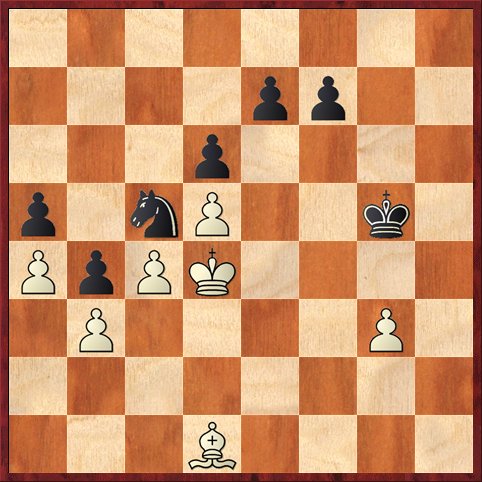 Position after 14. Kd4. Black to move.
Position after 14. Kd4. Black to move.
FEN: 8/4pp2/3p4/p1nP2k1/PpPK4/1P4P1/8/3B4 b – – 0 14
Here Uyanga played 14. … f5, and the wise old masters (myself included) shook their heads. Uyanga had missed the opportunity to play 14. … Kf5 (zugzwang!) 15. Ke3 Ke5 16. Bc2 f5 (zugzwang!) 17. Bd1 Ne4, which seemingly wins. But does it, really? Let’s go a little bit farther: 18. Kf3 and now what does Black do?
Position after 18. Kf3. Black to move.
FEN: 8/4p3/3p4/p2Pkp2/PpP1n3/1P3KP1/8/3B4 b – – 0 18
Well, if you don’t play 18. … Kd4 then none of those zugzwangs had any point. They were zug-nots (or not-zwangs?). But if you play 18. … Kd4??, you lose! White plays 19. Kf4!, gobbles up the f-pawn and proceeds to munch on e7 and d6 for dessert. (It’s true that there are some subtleties. Black could play 19. … Kc3 20. Kxf5 Nc5, shutting White’s king out of e6, but I think that the outside passed pawn is too strong after 21. g4.)
She zugs me, she zugs me not…
Bottom line: Uyanga should not beat herself up over the failure to win the knight-versus-bishop endgame. It looks as if it was not a win. Earlier, allowing 8. c5 was a definite mistake, even if she didn’t pay for it. It looks as if the idea of going all out for an attack on the h-file was misguided; at best she goes into a drawn endgame, at worst she leaves the queenside unguarded for a White breakthrough. It really does seem as if, after all, her best shot at winning was 1. … a4!
As Tarrasch said, “Before the endgame the gods have placed the middlegame.” It seems as if Uyanga should have listened to him. Instead of trading directly down into an endgame that was not as winning as she thought, she should have tried to increase the advantage she had by using her rooks as well.
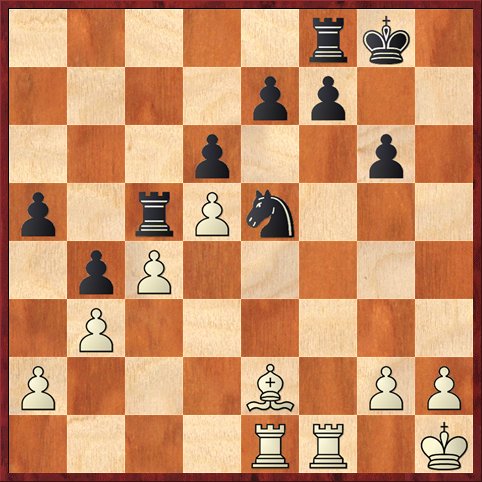
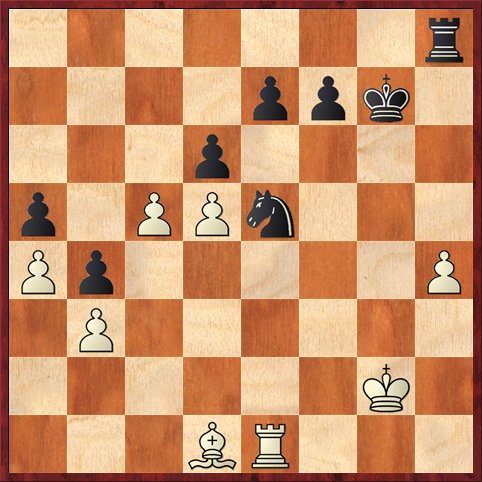
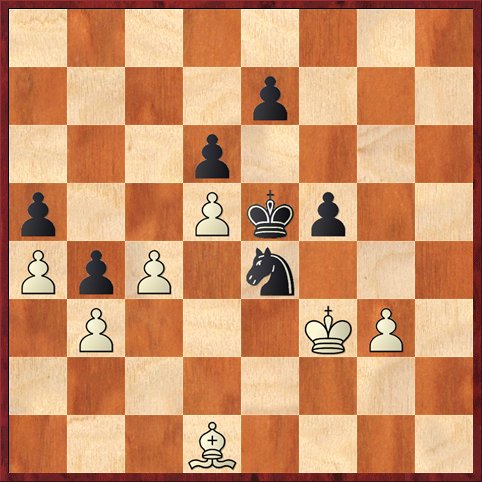



{ 5 comments… read them below or add one }
Hi Dana,
Very interesting column! Thanks for posting. There is a lot of food for thought here. I really liked what you did in terms of analyzing the tactics. I would like to respectfully disagree with your final conclusions. I think the minor piece ending was a win for Black and accordingly “the Mike Splane method” is actually the right approach. But it is definitely tough to make that evaluation in the initial position.
I think the principle of taking a close look at unique opportunities was a great addition to the discussion. I completely disagree that it is opposite to the way I play chess. I don’t ignore tactics. My analogy would be to driving a car. If you have a map it is easy to decide which roads to take (overall plan) but you still want to pick the best and fastest route (unique opportunities/candidate moves). If you are relying on driving around randomly (without a plan) the streets (moves) you pick may get you to where you want to go but you could also become lost. I think using a map (having a plan) before looking at candidate moves is simply a better way to play chess.
I think what we are really talking about, in terms of different approaches, is what I would call pace. I’m not in a rush to win quickly if I know the slower approach is safe and sure. I’ve been burned too often by trying to rush a win and missing a tactic. I also have a great deal of faith that my opponents will make bad moves and make things easy for me if I give them enough rope. Capablanca used that approach very successfully Now I’m no Capablanca but my opponents are also much weaker than his were.
In my handout I gave my definition of an endgame weakness as ” a square that needs to be defended by a piece.” I also pointed out in the initial position there were no squares in the White position that met that definition. My system of waiting patiently, building up your position. and stopping counter-play, which Uyanga followed by NOT PLAYING A4, paid off immediately when White blundered and played a2-a4, creating a weakness on b3. This move is a mistake by White and does not deserve an exclamation mark. Now the knight can settle on c5 or d4 and tie down the bishop in a minor piece endgame.
BTW, White is in no way forced to destroy her pawn structure by taking on a4.
Mike Splane method 1, other methods 0. (Just for fun I’m using your counting method.)
The c4-c5 tactical shot in the third diagram would not be available for White if Uyanga had been playing the Mike Splane method . After White played a4 I pointed out that Black should bring her king to c5 before undertaking any activity on the kingside. My method, when the opponent lacks counter-play, calls for you to centralize your king and put your pieces on their optimum squares before starting activity.
Mike Splane method 2, other methods 0.
The move the other masters were so proud of, f5, is not the move I would have played. I thought it was a positional blunder, as you correctly point out in the fourth diagram. it violates the Mike Splane method of never allowing counter-play.
Mike Splane method 3, other methods 0.
The bishop versus knight ending is not a draw. In the fifth diagram after 14. … Kf5 15. Ke3 Ke5 16. Bc2 Instead of 16 … f5 Black has the much stronger move 16 … e6 17. de6 fe6. 18. Bd1 Ne4 19. Kf3 Kd4 Now White has three weaknesses to defend, the squares in front of the passed e-pawn, the b3 pawn, and the g3 pawn. Black only needs to be careful to make sure the g-pawn doesn’t become dangerous. Unless I’m missing a tactic somewhere I think Black should win this.
Mike Splane method 4, other methods 0.
BTW, if it turns out that White can actually hold the minor piece ending then I would have to agree with your conclusion that a5-a4 should be played in the starting position and the forcing moves approach is better in this game.
Good comment! I definitely agree with you about bringing the king around to c5 before trying to break through on the kingside (your second point). Having committed herself to a slower plan, Uyanga was inconsistent and played too quickly on the kingside.
I have long been fascinated by this sort of side-to-side king march (when it works). I also once did a ChessLecture on a game of Nakamura’s where he marched his king from h2 to a2, I think. Psychologically it’s a great way of emphasizing the opponent’s helplessness, when you can take five or six moves to leisurely stroll with your king across the board. But at the same time, it transforms the position in a fundamental way — it’s not mere “wood-pushing.”
Your other points will take more thought, especially the evaluation of the N-vs.-B endgame. It’s interesting that one has to go so very deep to determine whether 1. … a4 was a good move or a mistake.
Mike, I looked at the N-vs.-B endgame a little bit over lunch and I’m very skeptical that Black can win. At the very least, I’d like to know how he can do it, because I would learn something.
In your line, after 18. … Ne4 I disagree with 19. Kf3 and I want to play 19. g4. My intention is never to move my king from e3 again, unless it’s to go forward. Black has no checking squares available — White’s pawns cover them all. I can see two possible plans for Black: (A) try to maneuver the knight to d4 and play for zugzwang, or (B) bring the king over to the kingside and try to win the g-pawn. Either way, Black first has to reposition his knight, so let’s say 19. … Nc5. Now White plays 20. Bc2. If Black opts for plan (A) with 20. … Nd7 then White has the interesting idea of 21. g5!? which stalemates Black’s king! The only pieces Black can move are the knight or the d-pawn. Knight moves get nowhere, however, because the knight can’t lose a tempo. White just has to keep his bishop on the b1-h7 diagonal and make sure that he can play Bc2 after … Nc5. And I think that pushing the d-pawn is doomed to failure, because in a contest of one pawn versus one White has the outside passed pawn. So I think plan (A) does not win. I am not as sure about plan (B), but after 20. … Kf6 21. Kf4 I feel as if Black is making negative progress. If 21. … e5+ now Black’s king no longer has access to the important square e5. And if the pawn ever pushes to e4, now it becomes a target, and White can think about ideas like pushing the g-pawn to trade it for the e-pawn.
I think there are too many obstacles for Black to overcome. But I’d be interested to hear if you disagree! Perhaps we should put the position on a computer and try to play it out, and see if it comes up with any ideas.
Whoops. Slight correction. After 19. g4 Nc5 20. Bc2 Nd7 I can’t play 21. g5? because 21. … Nc5 leads to exactly the position I wanted to avoid, where it’s White to move. Instead I think White should play 21. Be4. If 21. … Nc5 22. Bc2. If 22. … Nf6 23. Bf3 and Black has to move his knight again, after which White can return the bishop to e4. On other knight moves White will play g5 and stalemate Black’s king (as discussed before). Finally, on 22. … Kf6 23. Kf5 we are now in variations like plan (B), where Black appears to be making no progress.
Okay, now over to you.
You’ve convinced me.
To sum up:
To win Black must dislodge the White king from e3.
Black has no checking squares available — White’s pawns cover them all.
Zugzwang ideas don’t work; the knight can’t lose or gain a tempo on the bishop.
Therefore the minor piece ending is probably a draw with best play.
Notice we don’t need to look at any variations, all we need is those three statements. If we did this positional assessment using schematic thinking, before considering candidate moves. we would know from the starting position that 1… a4 must be the right idea. This is the roadmap idea I was talking about. Learning how to do this kind of thinking is what I was hoping would be the main topic at the party.
One other related point, I don’t think any one method is always right for all positions.
We all have different strengths and it is natural to try and solve positions using the methods you are strongest in. Maybe I’m a big believer in trying to assess the position before looking at variations, because I am good at assessing simplified positions. Maybe other people want to only look at variations because their assessment skill is relatively weaker.
Thanks for the interesting discussion.